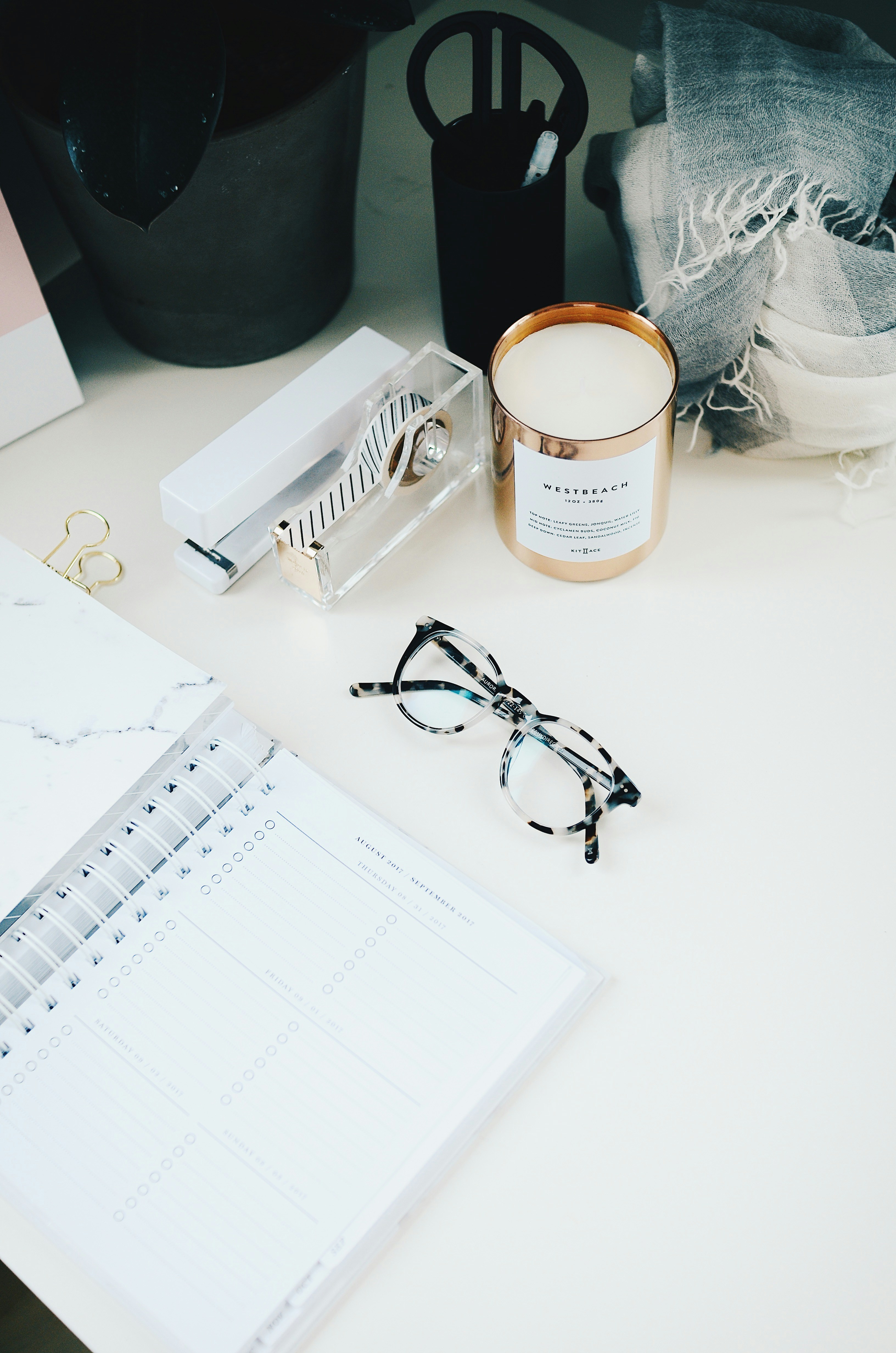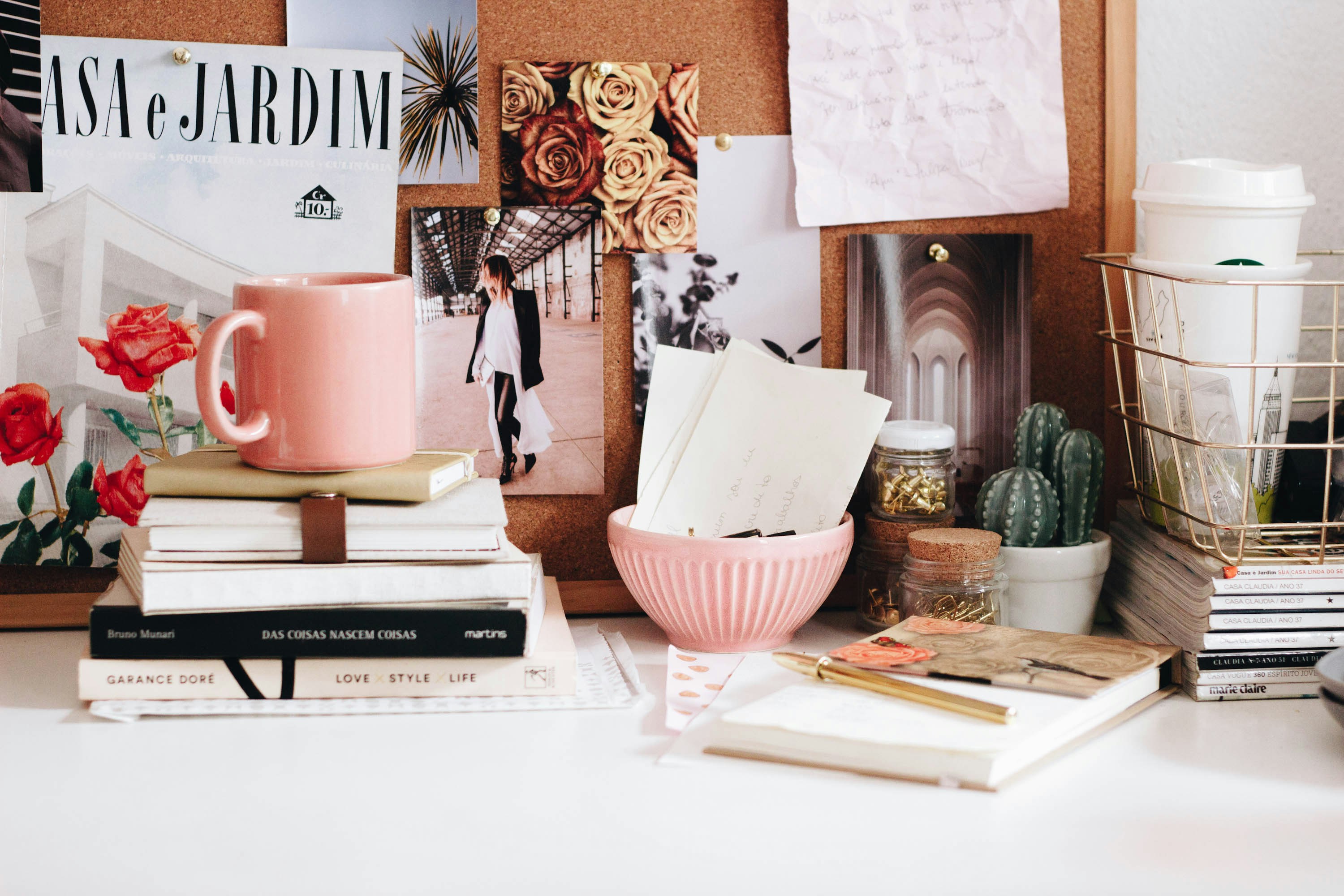No products in the cart.
Imagine stepping into a workspace that instantly transports you to a world of tranquility and motivation. A place where every element, from the scents that linger in the air to the textures underneath your fingertips, is carefully chosen to serenade your senses. Sound enticing? Well, you’re in luck. In this article, we will uncover the secrets to designing a workspace that does just that, allowing you to create a sanctuary of relaxation and productivity. We’ll explore the power of soothing scents, the magic of tactile materials, the impact of calming sounds, the role of lighting in creating serenity, and how optimizing ergonomics can enhance your well-being. So get ready to transform your work environment, as we guide you on a journey of sensory delight. By incorporating these principles, you’ll not only boost your productivity but also cultivate a space that truly reflects your personal style and preferences. Are you ready to embark on this sensory adventure? Then let’s dive in and discover how to create a workspace that serenades your senses
CHOOSING SOOTHING SCENTS
When it comes to designing a workspace that serenades your senses, soothing scents can play a crucial role. Just as certain fragrances have the power to transport us to nostalgic memories or evoke feelings of relaxation, incorporating carefully chosen scents into your workspace can create a sense of tranquility and focus. So, in addition to embracing tactile materials, let’s explore the secrets of choosing soothing scents that can enhance your work environment and elevate your productivity.
EMBRACING TACTILE MATERIALS
In addition to incorporating soothing scents, another vital aspect of designing a workspace that serenades your senses is embracing tactile materials. Our sense of touch has a profound impact on our overall well-being and can greatly influence how we interact with our environment. By intentionally selecting materials that are pleasing to touch, you can create a workspace that not only looks beautiful but also feels comforting and inviting.
Consider incorporating natural and organic textures into your workspace. Wood, for example, not only adds a warm and earthy aesthetic but also provides a soothing tactile experience. Running your fingers along a smooth wooden surface or feeling the grain beneath your palms can instantly create a connection to nature and promote a sense of grounding.
Another tactile material to consider is fabric. Soft and cozy textiles can lend an element of comfort and relaxation to your workspace. From plush cushions to tactile wall hangings, incorporating fabric can add a touch of luxury and create a welcoming atmosphere. Experiment with different textures and patterns to find what feels most enticing to you.
Additionally, don’t forget about the power of plants. Not only do they provide visual appeal, but their leaves and petals can add an element of tactile delight. Consider incorporating plants with velvety, smooth leaves or ones that have soft and delicate petals. Running your fingertips along these plants can provide a unique sensory experience that promotes a sense of calm and tranquility.
By intentionally embracing tactile materials in your workspace, you can create an environment that engages not only your visual senses but also your sense of touch. This holistic approach to design will not only enhance the aesthetics of your workspace but also create a serene and inviting atmosphere that promotes focus and productivity.
With tactile materials beautifully integrated into your workspace, let’s now explore the secrets of creating calming sounds that can further enhance your sensory experience and foster a sense of tranquility in your work environment.
CREATE CALMING SOUNDS
With tactile materials beautifully integrated into your workspace, let’s now explore the secrets of creating calming sounds that can further enhance your sensory experience and foster a sense of tranquility in your work environment.
Sound is an often underestimated but powerful component of our surroundings. Just as certain colors and textures can evoke specific emotions, different sounds can also have a profound impact on our mood and overall well-being. By intentionally incorporating calming sounds into your workspace, you can create an auditory experience that complements the visual and tactile elements.
One option to consider is introducing nature-inspired sounds, such as gentle raindrops, rustling leaves, or soothing ocean waves. These sounds can be played through a small desktop speaker or even through headphones, allowing you to create your own personal sound oasis. The soft murmur of a bubbling stream or the distant chirping of birds can transport your mind to a peaceful natural setting, helping you find focus and relaxation amidst the demands of your work.
Alternatively, you may choose to embrace silence as a form of sound therapy. For some, complete silence is the key to concentration and serenity. If that resonates with you, design your workspace in a way that minimizes external noises and distractions. Opt for noise-canceling headphones or a quiet corner away from high-traffic areas. Silence can create a meditative atmosphere, allowing your thoughts to flow freely and your creativity to flourish.
Moreover, ambient music or instrumental tracks can also contribute to a calming soundscape. Gentle piano melodies, soothing classical compositions, or even contemporary ambient tracks can provide a pleasing backdrop to your work. The absence of lyrics can prevent your mind from getting entangled in deciphering words and instead allow you to fully immerse yourself in your tasks.
By consciously choosing and incorporating calming sounds into your workspace, you can create an acoustic environment that promotes tranquility and concentration. These soothing sounds, combined with the tactile materials and visual elements, will work in harmony to serenade your senses and cultivate an atmosphere of productivity and peace.
Now, let’s delve into the next aspect of designing a workspace that embraces tranquility:
LIGHTING OF SERENITY
Lighting plays a crucial role in creating a serene workspace that invites productivity and peace. Just as acoustic elements and visual elements work in harmony, the right lighting can further enhance the ambiance and serenity of your workspace. By carefully considering and implementing lighting options, you can optimize your environment for both mental focus and physical well-being.
When it comes to lighting for serenity, it’s essential to prioritize natural light. Sunlight has a profound impact on our mood and overall well-being, so positioning your workspace near a window or incorporating large windows into the design can flood the area with natural light. This not only creates a brighter and more spacious feeling but also helps regulate your body’s natural circadian rhythms, promoting better sleep and overall energy levels.
However, in situations where natural light is limited, artificial lighting becomes a crucial element. To maintain a sense of tranquility, opt for warm, softer lighting options rather than bright or harsh overhead lights. Soft, diffused lighting can create a cozy and relaxed atmosphere, reducing eye strain and promoting a calm state of mind. Consider using floor or desk lamps with adjustable settings, allowing you to customize the level of lighting based on your tasks and preferences.
In addition to the overall lighting, task lighting is also important to consider. A focused, direct light source can enhance your concentration and help you stay engaged in your work. Adjustable desk lamps or directional lights can provide the right amount of light for specific tasks, such as reading or detailed work. By having control over your lighting, you can create a workspace that caters to your individual needs, boosting both productivity and serenity.
OPTIMIZING ERGONOMICS
Now that you’ve created a workspace that engages your senses and promotes tranquility, it’s time to focus on optimizing the ergonomics of your setup. The way you position and interact with your furniture and equipment can greatly impact your comfort, productivity, and overall well-being.
First and foremost, let’s talk about your chair. A good chair should provide adequate lumbar support, allowing you to maintain a neutral spine position. Look for a chair with adjustable features, such as height, armrests, and backrest angle, to customize it to your body’s unique needs. By ensuring that your chair promotes proper posture, you can prevent unnecessary strain on your back and neck.
Next, let’s consider your desk. The ideal desk height should allow your feet to rest flat on the floor, with your knees at a 90-degree angle. If your desk is too high or too low, it can lead to discomfort and potential musculoskeletal issues. Adjustable standing desks are also worth considering, as they allow you to switch between sitting and standing, promoting better circulation and reducing the risk of sedentary-related health problems.
In addition to your chair and desk, don’t forget about your computer setup. The top of your computer screen should be at eye level, allowing you to maintain a natural gaze without straining your neck. If necessary, invest in a monitor stand or adjust the height of your chair accordingly. Your keyboard and mouse should be positioned in a way that keeps your arms relaxed and your wrists in a neutral position, helping to prevent repetitive strain injuries.
Lastly, take breaks and move around. No matter how ergonomically perfect your workspace is, sitting in one position for extended periods can still take a toll on your body. Remember to stand up, stretch, and take short walks throughout the day. This will not only give your muscles a break but also rejuvenate your mind and enhance your focus when you return to your tasks.
By optimizing the ergonomics of your workspace, you are setting yourself up for long-term comfort and productivity. A well-designed and ergonomically sound environment fosters a healthier work experience, reducing the risk of injuries and enhancing overall well-being. Now, let’s bring everything together and see how all the elements we’ve discussed contribute to creating a workspace that serenades your senses and supports your best work.,
In conclusion, designing a workspace that serenades your senses is the key to unlocking a sanctuary of relaxation and productivity. By incorporating elements that engage all your senses, such as soothing scents, tactile materials, calming sounds, optimized lighting, and ergonomic features, you can create a harmonious environment that enhances your well-being and boosts your productivity. Your work environment should be a reflection of your personal style and preferences, allowing you to feel inspired, focused, and rejuvenated. So, why wait? Take the first step today and start transforming your workspace. Experience the serenade of your senses, and let your productivity soar to new heights. As the great Steve Jobs once said, “Design is not just what it looks like and feels like. Design is how it works.”
Share on facebook
Share on twitter
Share on linkedin






